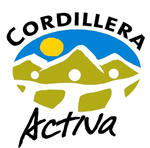Located in the cordilleran landscape of the Central Andes, the Nature Sanctuary of ‘Yerba Loca’ is an excellent option to enjoy an evening or a weekend amidst the quietness and beauty offered by nature.
Given the characteristics of the reserve, it is possible to carry out several activities there: trekking, mountaineering, ice climbing, horseback riding, observing flora and fauna and picnics.
Being 25 kilometers away from Santiago, to get to the reserve you have to take the road leading to Farellones, in the 15th switchback (they are numbered) you will find the park ranger station of the sanctuary, run by CONAF (National Forestry Corporation). Here you will get basic information and recommendations for the visitor.
Passing the administration sector, there are four kilometers of a dirt road in regular condition this is the way to get to the place known as ‘Villa Paulina’. At this place, there are camping sites, primary facilities and picnic places equipped with tables, benches, trash bins, furnaces and parking places.
The visitor can visit the area from this place.
Something to know...
With a surface of 39 thousand hectares, from which 11 thousand and 575 are run by CONAF, this protected area has several interesting sites, being Villa Paulina, Piedra Carvajal and La Paloma and El Altar glaciers the most remarkable ones.
To visit the reserve safely and ecologically, you just have to go along the paths marked out by CONAF. The most interesting is the one leading to La Paloma and El Altar glaciers through Villa Paulina. It is a 14-kilometer way through the valley of Yerba Loca creek. Along the way, you can see the range limiting the hydrographic river basin, or the range El Plomo – La Parva to the east and Yerba Loca to the west.
The mounts of La Paloma, Falso Altar and El Altar (5,222 meters above sea level), located at the end of the valley, can be seen during our walk, but don’t get confused, El Altar mount can be seen only from Piedra Carvajal sector; the one in front of you along the way is is the Falso Altar.
The path follows the main water stream, called ‘Yerba Loca’, whose origin is located at 3,900 meters above sea level, at the foothills of ‘La Paloma’. Its waters contain a great amount of sulfates that not only give the water a turquoise color, but also make it not suitable to drink.
Its affluents are the brooks La Leonera and Chorrillo del Plomo, apart from the numberless springs flowing near the main stream, which not only add water, but also produce many waterfalls.
Protection. The main goal...
Since the fact that Yerba Loca is located about 900 and 5,500 meters above sea
Between 1,300 and 2,000 meters above sea level, the olivillo of the cordillera is very common, though it is an endangered species in the Metropolitan Region. Apart from this, in Villa Paulina sector, there are small forests of foreign species (by inhabitants of this area as well as by CONAF), which have adapted to the Andean sector conditions. They comprise certain coniferous such as the cypresses, pines (oregon), poplars, elms and eucalyptus.
Doubtless, the presence of birds in the sanctuary is predominant. The most common species are the turtledoves (Zenaida Auriculata), and Peuco (Parabuteo unicinctus) and kestrels among the birds of prey. At a higher altitude, eagles and condors dominate the skies.
The rest of the representatives of the animal kingdom, among mammals and reptiles, is not so abundant. The family of mammals with the biggest number of inhabitants is the rodents, being the representative species the cururo, the degu (Octodon degus) and Darwin’s long-eared mouse. Although is not uncommon to see gray foxes (Dusycion Griseus) around.
Having fun
The best time to visit Yerba Loca elapses between the months of December to March. In the sector of Villa Paulina, it is very hot, but the heat decreases while you go up; nevertheless, the dangerous effects of the sun don’t decrease at all.
What to do? Walking along the paths of the sanctuary, enjoying the exercise and the landscape seems to be the most common and relaxing choice. Another possibility is hiring horses and riding along the paths. It may be fun, amusing and relaxing.
On the other hand, mountaineering lovers consider the mounts of La Paloma and El Altar as interesting goals, not only to get to their summits, but also to climb their hanging glaciers.
If it is true that the best time to visit the sanctuary is during spring time, fall and winter also has their charm. For all those who like snowy landscapes, snow can even cover the road into the park (and even farther), and the mean low temperatures may fall well below freezing, being the park closes when it is impossible to walk around.
What to take...
If you visit the sanctuary during summer time, don’t forget to take a good sun block lotion, SPF 30 minimum, light clothes, shoes adequate to walk along dirt and sometimes rugged paths.
Enough food and water (you can take it from several springs, but avoid the main stream), cap and sunglasses to protect you from the sun, and warm clothes for the evenings or at higher altitudes.
If the visit is in winter, or at the end of it, take everything mentioned above, varying perhaps the shoes, which must be adequate to walk in the snow, and also bring a gloves and a parka.
Text: G. Salinas
http://www.gochile.cl/html/YerbaLoca/yerbaloca.asp

No comments:
Post a Comment